This BMW Will Be the Best-Looking Car at Le Mans
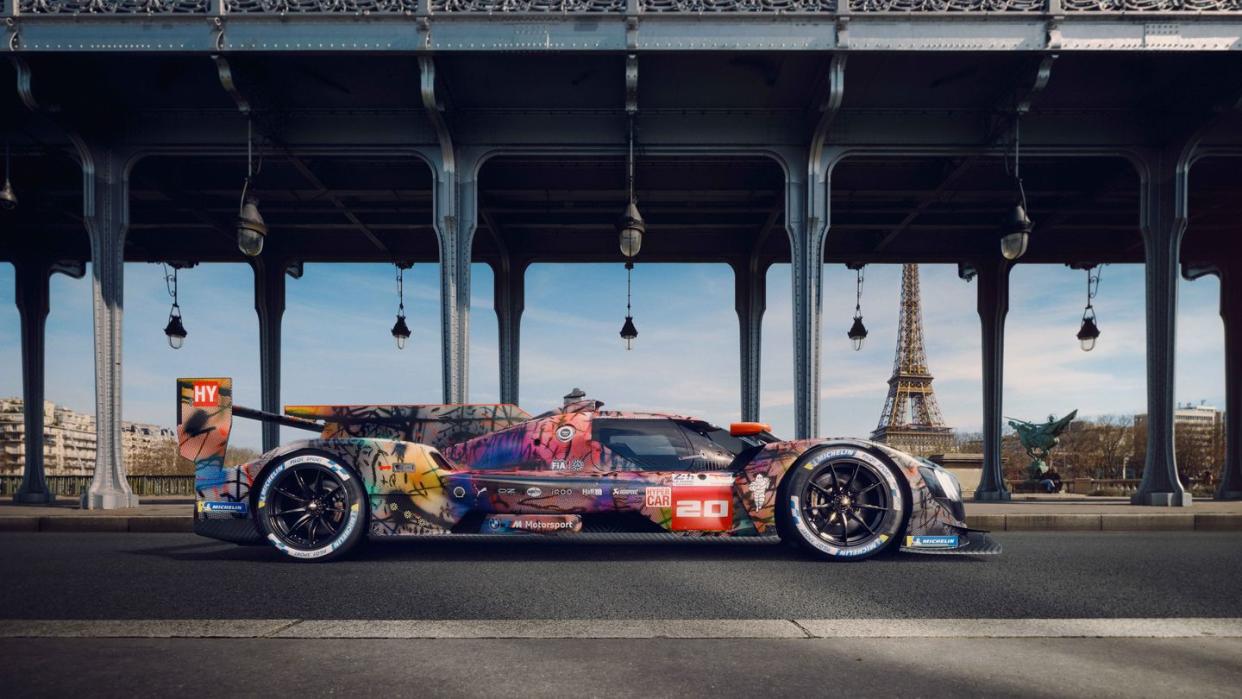
Can cars be considered art? Find yourself among the right crowd at the right kind of event—say, at a Concours in Pebble Beach or Villa d'Este, or trackside at a Formula 1 Grand Prix—and the answer is obvious. (Good luck trying to argue otherwise.)
For nearly 50 years, BMW has taken a more literal approach to this question. It all started in 1975 when French race car driver Hervé Poulain came to the automaker with an idea. Why not turn one of its cars into a canvas and invite an artist to paint it? He had the perfect person for the job too: his friend, Alexander Calder. The C-suite was sold, and the legendary sculptor was given carte blanche to design a 3.0 CSL that Poulain would race in that year's 24 Hours of Le Mans. The vehicle didn't make it past the finish line, but that's beside the point. The BMW Art Car project was officially born—and the bar set very high.
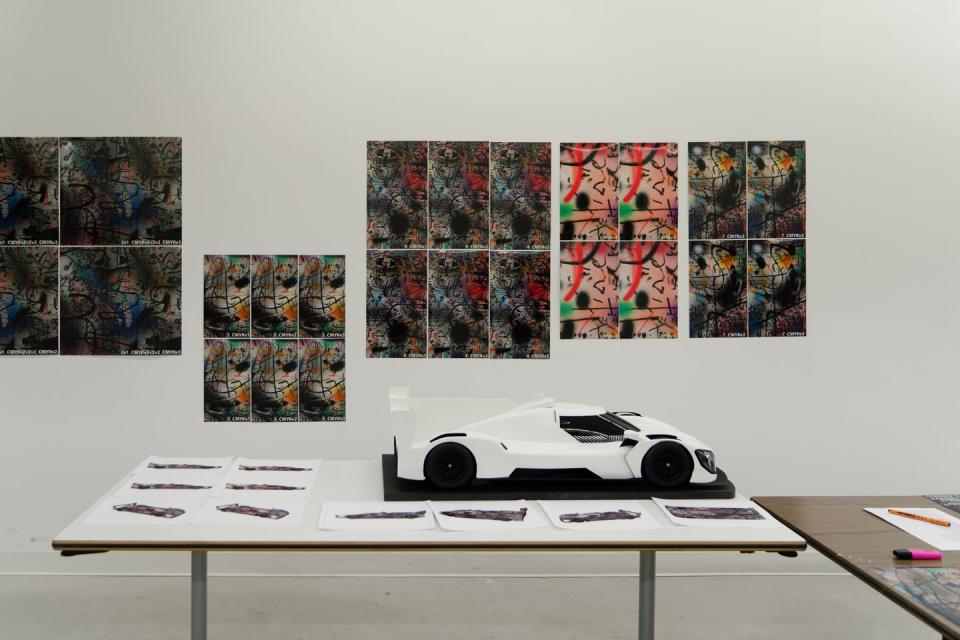
The next year, Frank Stella put his signature on another 3.0 CSL that again sped in Le Mans. Then came Roy Lichtenstein in 1977, whose BMW 320i Turbo came in 9th that year, then Andy Warhol in 1979, whose M1 revved up to a 6th overall finish. There was Robert Rauschenberg, whose exhibition-only BMW 635 CSi never raced but did go for a spin (with Rauschenberg himself behind the wheel) and David Hockney, who put his signature on Art Car #14. Four years later, in 1999, Jenny Holzer made her mark on #15 by covering a V12 LMR with her famously cryptic aphorisms ("The unattainable is invariably attractive"). Jeff Koons and John Baldessari joined the club in the 2000s. So you get the picture. Titans only.
Which brings us to the present day. For its twentieth Art Car, unveiled last week at the Centre Pompidou in Paris, BMW commissioned Ethiopian-American artist Julie Mehretu to reconfigure her famously colossal abstract paintings—which hang in institutions like the Broad, the Met, and the Tate, and command top dollar at auction—for the sinuous BMW M Hybrid V8, a Batmobile of a race car that will be competing in Le Mans next month, the first Art Car to do so since Koons's 2010 model.
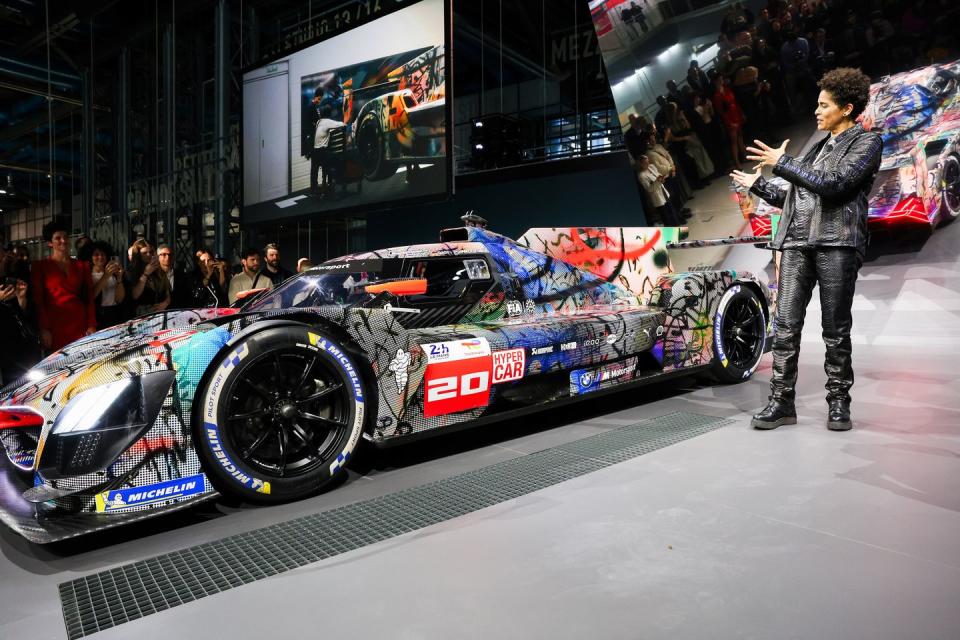
How do you translate 2D abstraction into a 3D driving machine with 640 horsepower engineered to reach a speed of 215 mph? The wonders of modern technology, for one. And excellent problem solving skills. Racing is a math game. Every tiniest mili-fraction of measurement counts. There can't even be a single drop of gasoline in the tank beyond what is absolutely required to finish the circuit (though Koons's car had the opposite problem and ran out of gas). Nor can there be any layers of paint on the vehicle because that would affect the aerodynamics.
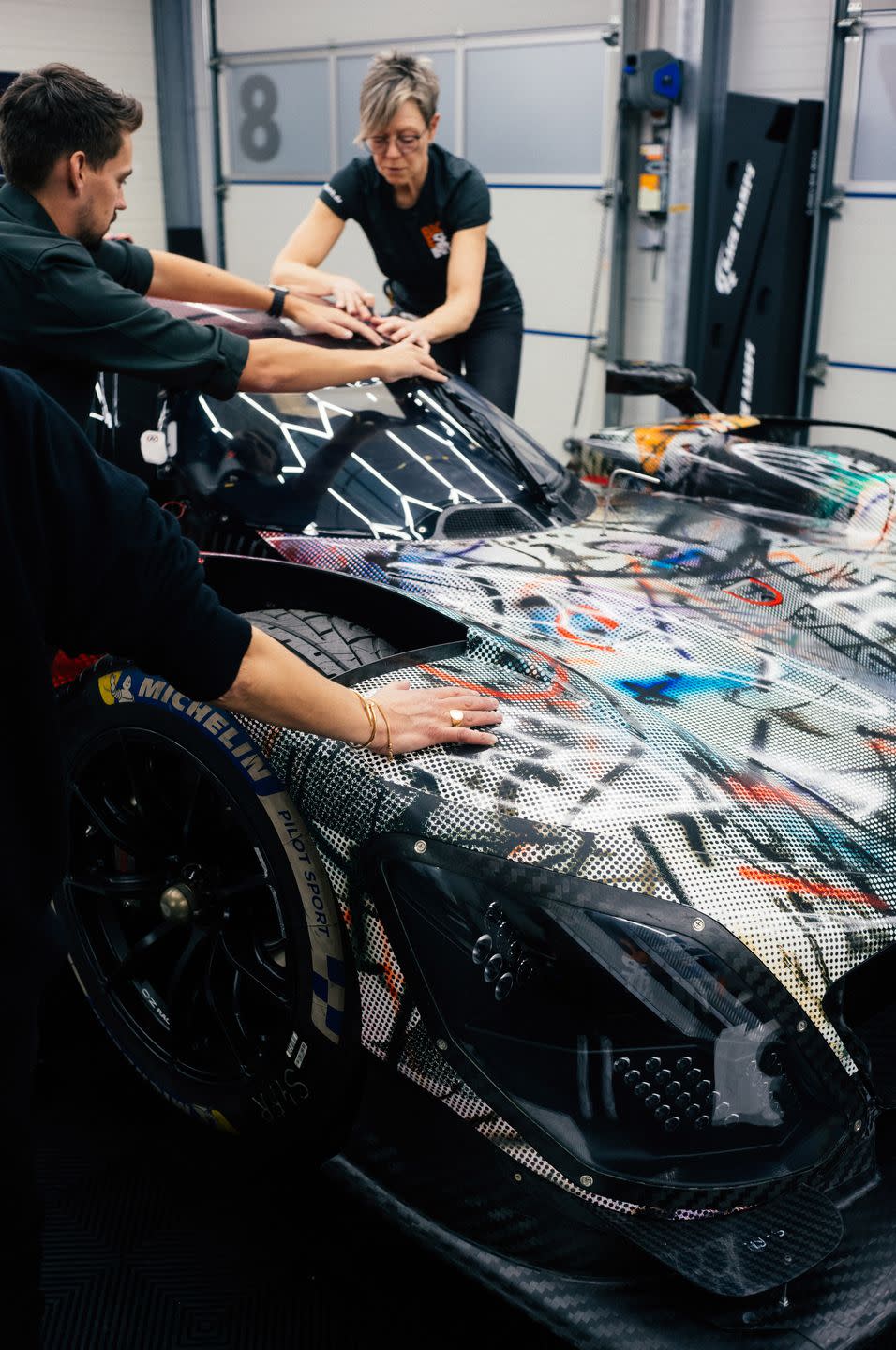
So instead, the final product was achieved through 3D mapping and a foiling technique to wrap the car with Mehretu's design, which incorporated elements of an earlier work, Everywhen (currently at the Palazzo Grassi in Venice but soon bound for the permanent collection of MoMA), as well as homages to the dynamic style of Frank Stella. (It turned out to be a poignant tribute to the artist, an avid driver himself and designer of BMW's 1976 Art Car, who died earlier this month).
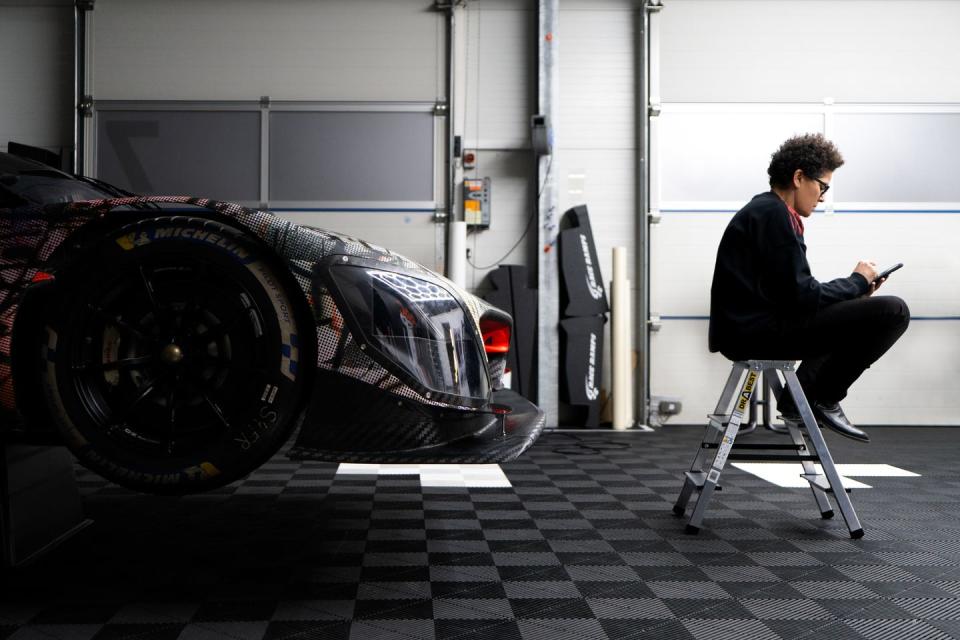
But of course it was the car itself—and witnessing the thunderous and frenzied energy of a racetrack and its pits—that proved most inspiring. "I was there when they were actually putting the car together and building it in the shop in Munich, and that was phenomenal," Mehretu says. "I still can't believe that it goes at the speed that it does. My work was really just more of a response to what they had all done. For me, it was a window into all of these different forms of imagination and knowledge."
And to think this collaboration almost never happened. When BMW first approached the artist, it was to do an Art Car that would be used for exhibition purposes only. She had no interest in that. "I didn't want to do something that was just decorative," Mehretu says. Once the canvas was upgraded, to what she calls a car "straight out of Blade Runner," the creative juices began to flow.
"I liked the idea that it continues to evolve, in terms of what happens to the car, what it goes through, the experience of the race," she says. "The painting has a very spatial dynamic to it, and the car going through that space is what I was interested in. It's a real dialogue."
You Might Also Like


